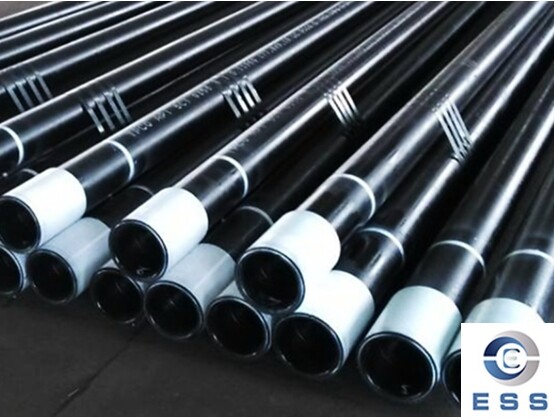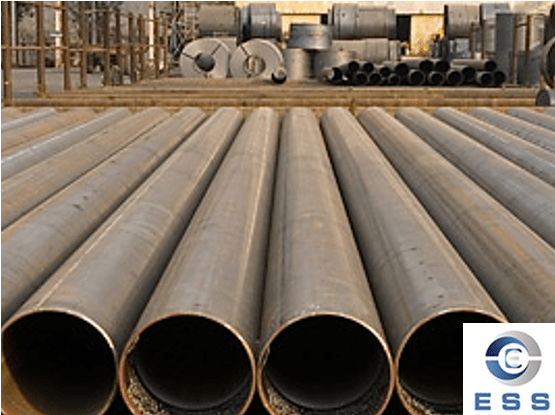
The best casing pipe type
for drilling in soil depends on the depth and geological conditions of the
well. Different depths and geological conditions have different performance
requirements for casing pipe, so it is crucial to choose casing pipe
reasonably.
The best casing pipe type for different
depths and geological conditions
1. Shallow hole drilling (less than 1000
meters)
Plastic fiber pipes (such as PVC pipes),
cast iron pipes and straight seam welded
pipes are often used. They are low-cost and easy to install, suitable for
ordinary shallow water wells and agricultural irrigation wells. However, due to
limited strength, it is difficult to effectively protect the wall under complex
geological conditions.
2. Medium-depth drilling (1000-2000 meters)
Low-grade seamless
steel pipe is a better choice, such as 20#-40# steel grades. It has good
strength and toughness, can withstand certain pressure and stress changes, and
is suitable for medium-depth wells under ordinary geological conditions.
3. Deep hole drilling (more than 2000
meters)
High-grade seamless steel pipes are
required, such as DZ40 and above. As the depth increases, the formation
environment becomes complex. High-grade seamless steel pipes have high
strength, good toughness, and fatigue resistance, which can ensure the safety
and stability of ultra-deep wells, such as ultra-deep oil exploration wells.
Main points of casing pipe materials and
performance
1. Plastic fiber pipe, cast iron pipe,
straight seam welded pipe
These pipes have low strength, poor
mechanical properties of plastic fiber pipe, large brittleness of cast iron
pipe, and weak welds of straight seam welded pipe. They are mainly used for
shallow holes and water wells, and are not suitable for drilling with high wall
protection requirements.
2. Spiral welded pipe
Suitable for wall casing pipe shallower
than 1000 meters. It is made by spiral welding and has a certain strength, but
the overall performance is inferior to seamless steel pipes. It is usually
necessary to reinforce the periphery with cement to enhance stability.
3. Seamless steel pipe
According to the steel grade, it is divided
into J55, K55, N80, etc., and the performance of different steel grades is
different. It must comply with API pipe standards, with strict specifications
for chemical composition, mechanical properties, etc., and the thread
processing must meet the requirements to ensure a tight connection and ensure
the safety of the drilling system in harsh environments.
Methods of lowering casing pipe
1. Lowering the first section of casing
pipe
Place the bottom of the first section of casing
pipe on the wellhead device, slowly lift the casing pipe through the lifting
equipment, make the casing pipe perpendicular to the wellhead, and then slowly
lower it into the wellbore. During this process, someone should observe the
lowering of the casing pipe near the wellhead to ensure that the casing pipe
descends vertically to avoid colliding with the well wall.
2. Subsequent casing pipe connection and
lowering
After the first section of casing pipe is
lowered to a certain depth (usually most of the casing pipe length), lift the
second section of casing pipe and connect it to the first section of casing
pipe. If it is a threaded connection, apply an appropriate amount of thread
sealing grease on the thread, then rotate the casing pipe to make the thread
tightly bite; if it is a welded connection, operate in accordance with the
welding process specifications to ensure the welding quality. After the
connection is completed, continue to lower the casing pipe, and repeat this
process until the designed casing pipe lowering depth is reached.
3. Straightening and centering
In the process of lowering each section or
every few sections of casing pipe, a stabilizer should be installed. The
stabilizer is usually installed on the outer wall of the casing pipe. Its
function is to keep the casing pipe in the center position in the wellbore,
reduce the friction between the casing pipe and the wellbore wall, and make the
cement around the casing pipe (if cementing is required) more evenly
distributed.
Summary
Choosing the right casing pipe is the key
to ensuring the safety and efficiency of soil drilling. In actual operation,
the drilling depth, geological conditions and casing pipe characteristics
should be comprehensively considered and reasonably selected. It is expected
that with the development of technology in the future, more high-quality casing
pipe will help the drilling industry reach new heights.













 Eastern Steel Manufacturing Co.,Ltd not only improve product production and sales services, but also provide additional value-added services. As long as you need, we can complete your specific needs together.
Eastern Steel Manufacturing Co.,Ltd not only improve product production and sales services, but also provide additional value-added services. As long as you need, we can complete your specific needs together.










